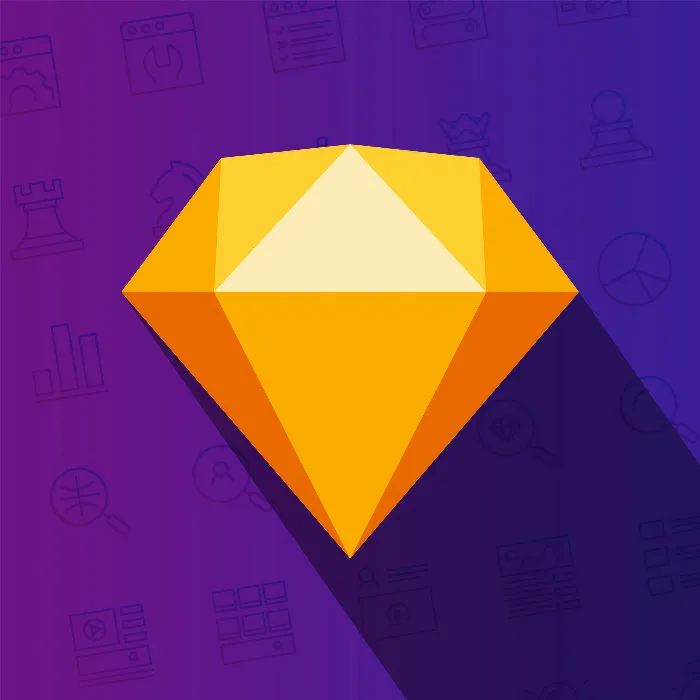Sketch is a powerful tool designed for designers who want to develop creative and functional applications. In this guide, I will explain the key features and tools you need to work effectively with Sketch. Let's dive into the world of design.
Key insights
- The Sketch dashboard allows you to select new projects and templates.
- The toolbar provides quick access to important tools and features.
- The inspector is crucial for customizing designs regarding size, position, and style.
- The layer system helps you organize your designs and work efficiently.
Step 1: Explore the Dashboard
After installing Sketch and opening the program, you will see a dashboard with various options. Here you can create new projects or click on templates to use existing templates, for example, for iOS app icons. Click on "new document" to start a new project and have a blank workspace in front of you.
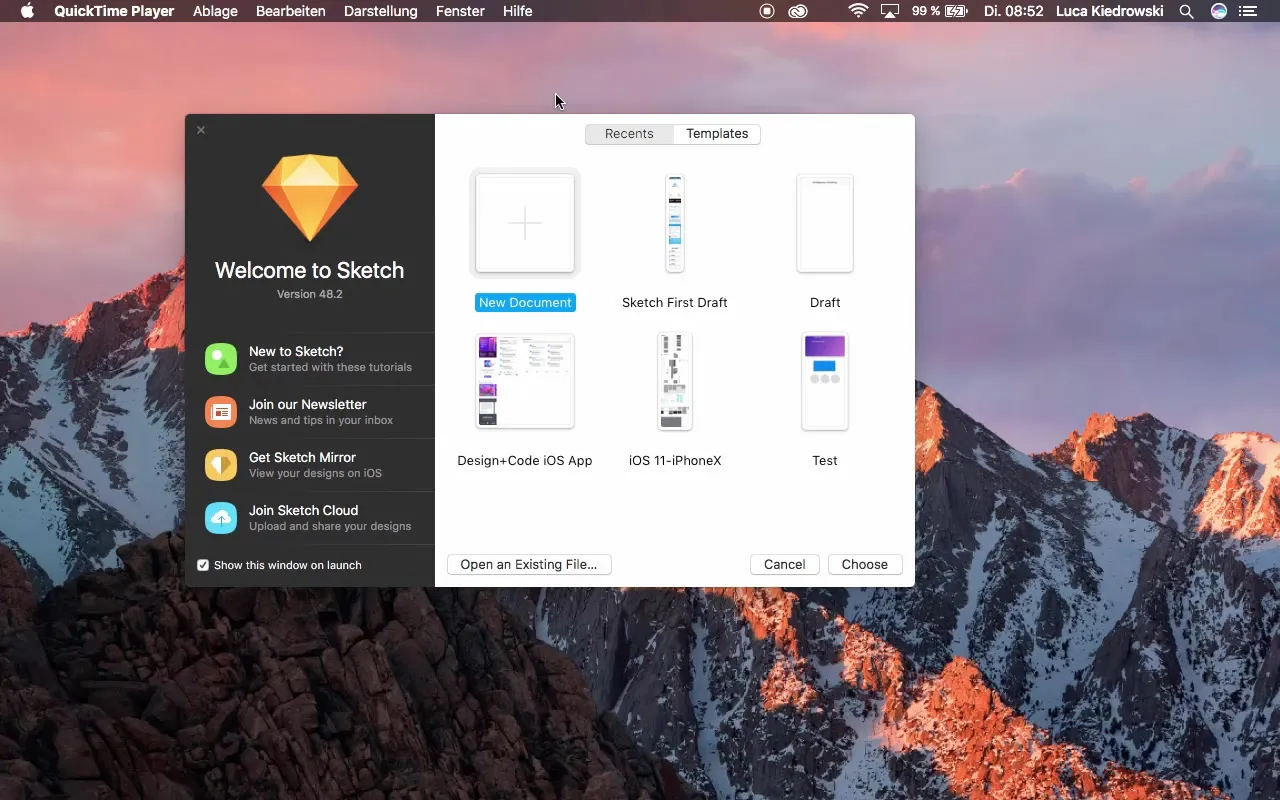
Step 2: Customize the Toolbar
At the top of the window, you see the toolbar, which provides you with a variety of tools. This toolbar may initially seem overwhelming, but don't worry. You can customize and add the most important tools you use most frequently. Just right-click on the toolbar and select "customize toolbar." Drag the desired icons into the toolbar to make them accessible for your work.
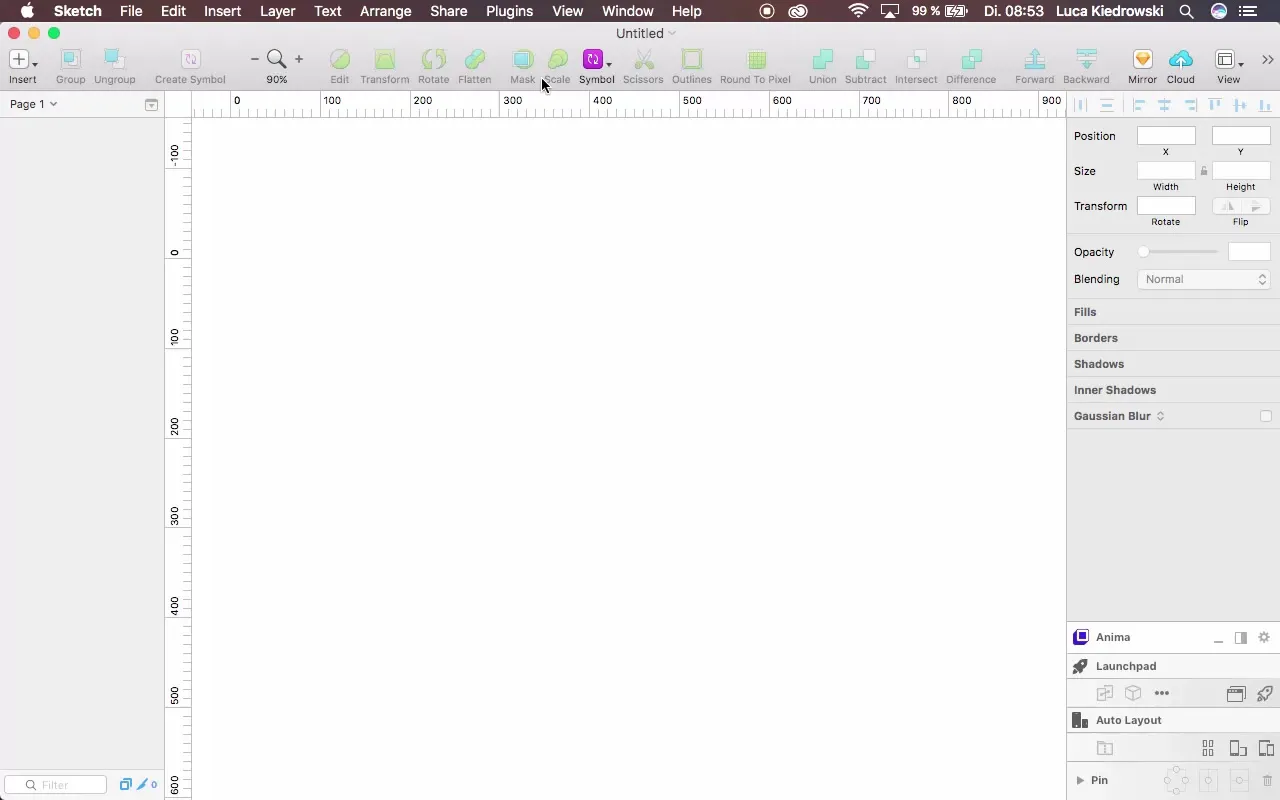
Step 3: Understand the Workspace
On the left side of the workspace, you will by default only see one page, referred to as "Page 1." Here you have the opportunity to manage the different layers and designs you create. Below, you will find a filtering function that helps you find specific elements more quickly. On the right side, you will find the inspector, similar to Xcode, where you can set properties like size, position, and more.
Step 4: Create Designs for Different Devices
By pressing the "A" key, you can select different devices for which you want to design. There are numerous templates available, so you can quickly start designing an app for iPhone or Android devices. Just click on the desired device and start designing.
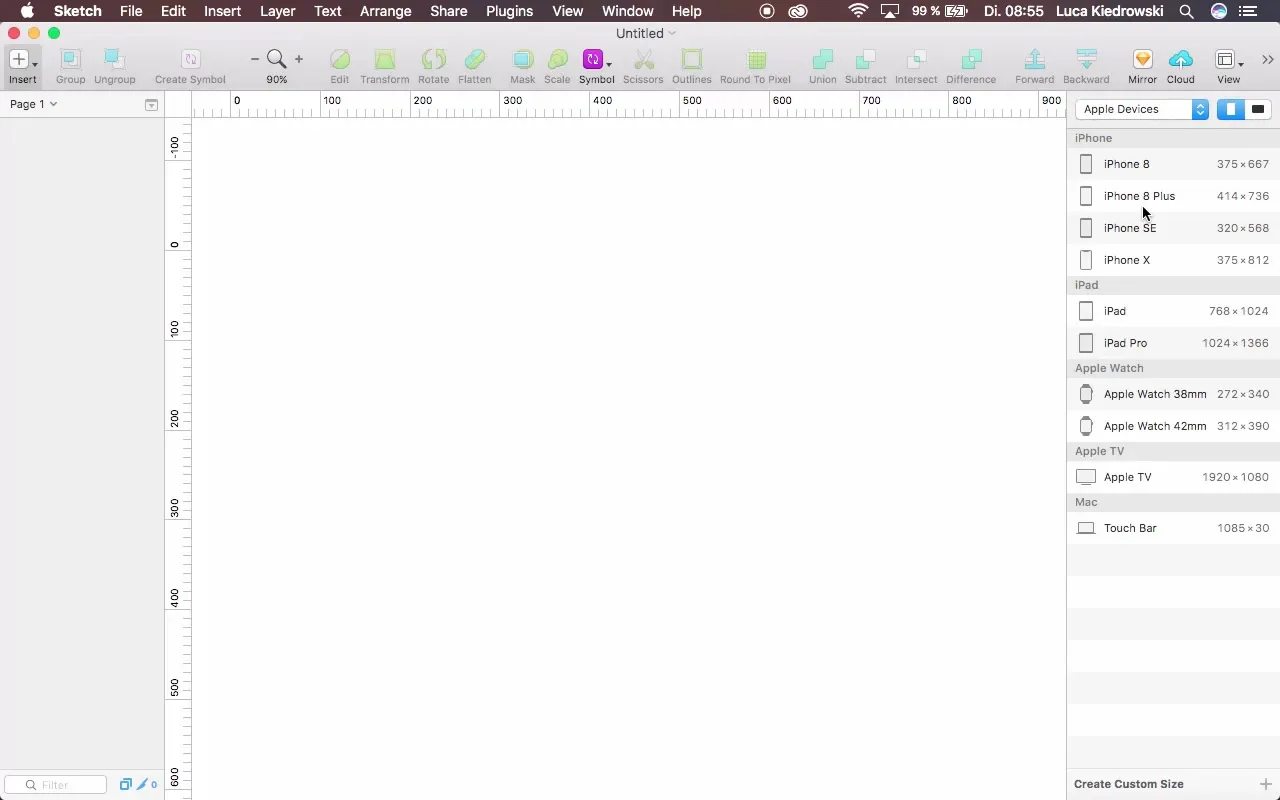
Step 5: Create Your Own Containers
To build your own containers, press the "R" key. You will notice that the cursor changes and a small rectangle appears. With this function, you can create shapes or containers that you can customize as you wish. In the inspector, you can directly edit the X and Y position as well as the size of these elements.
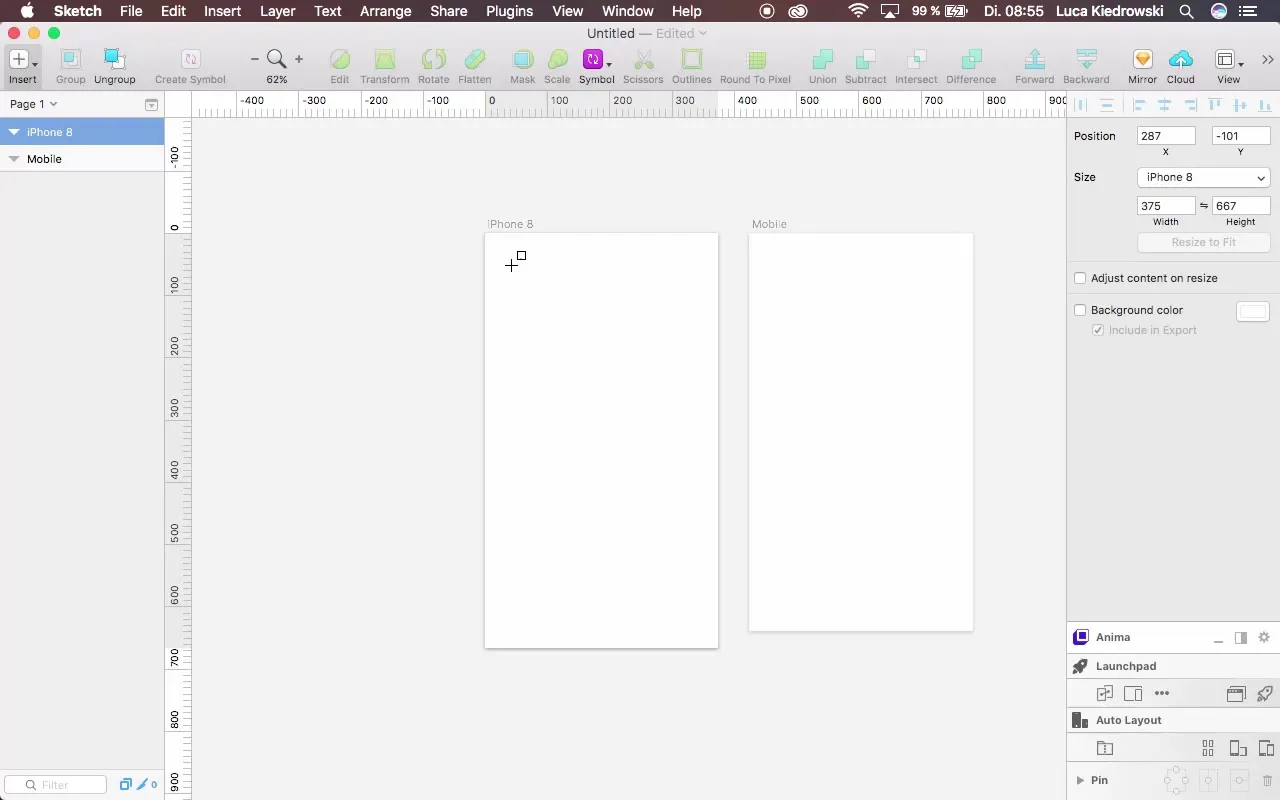
Step 6: Customize Colors and Styles
In the inspector, you will find many options to select colors. You can use global colors or even add a gradient. By default, there are several options, but you can also enter specific hex codes to get the exact color you want to use in your design.

Step 7: Manage Pages
If your project becomes larger and you have designs for different platforms, you can create new pages and name them accordingly. This way, you stay organized and can easily switch between different designs. Click on "new page" and name it, for example, "Web" or "iOS."
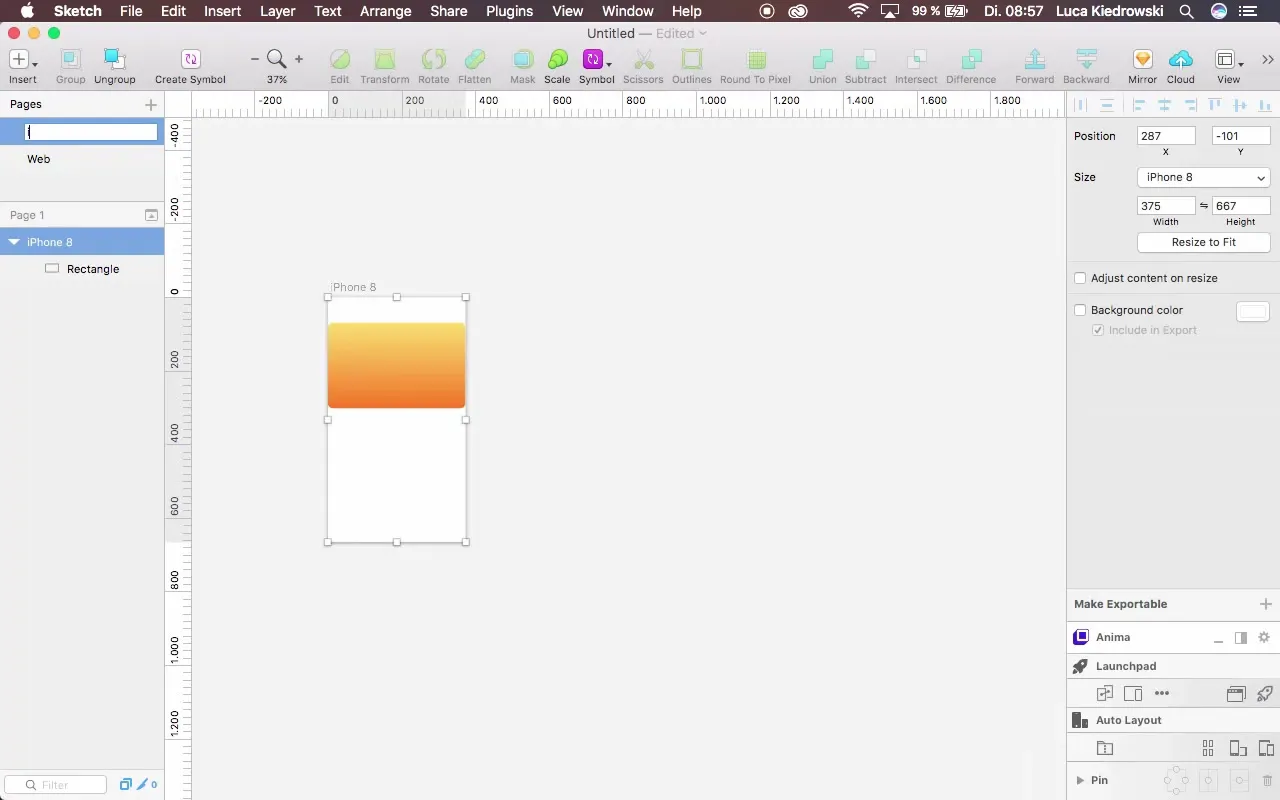
Step 8: Use Keyboard Shortcuts
For effective work with Sketch, you can use keyboard shortcuts to speed up navigation and design. If you have a larger keyboard, use the key with the equals sign to quickly switch back and forth between pages. This saves time and improves your workflow, especially if you prefer many shortcuts.
Summary - Sketch: The Program Interface - A Step-by-Step Guide
So far, you have received a basic overview of the program interface of Sketch. You have learned how to customize the toolbar, create and manage designs, and adjust colors and styles. Efficient use of these features will help you implement your designs optimally.
Frequently Asked Questions
What is Sketch?Sketch is a graphic design tool specifically developed for creating user interfaces and prototypes.
How do I customize the toolbar?Right-click on the toolbar and select "customize toolbar" to add the desired icons.
How do I create a container?Press the "R" key to create a container and drag with the mouse to adjust the size.
Can I use templates?Yes, Sketch offers various templates that make it easier to get started.
How can I switch between different pages?Use the shortcuts or the page management in the dashboard to quickly access different pages.
